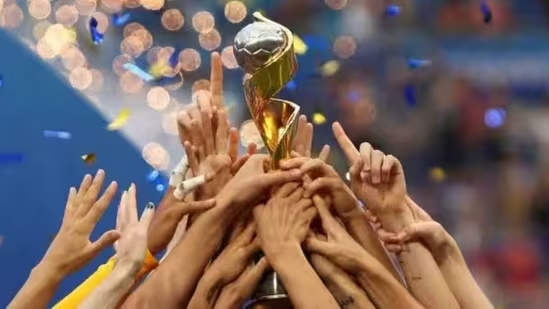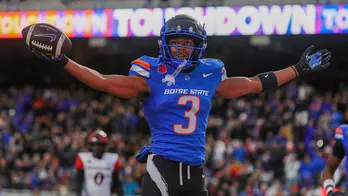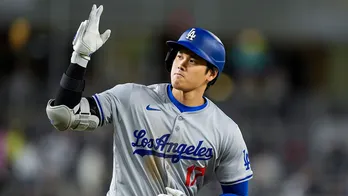End begins for legends as Women’s World Cup kicks off
The ninth Women’s World Cup, which begins in Australia and New Zealand on Thursday, comes in the year of Martha Stewart and Harrison Ford looking anything but weathered 81-year-olds while on the cover of Sports Illustrated's swimsuit issue and leading another Indiana Jones film, Kazu Miura showing 56 is no age to retire from professional football and, the hiccup of a Wimbledon setback notwithstanding, Novak Djokovic being convinced that 36 is the new 26.

So it will be for Megan Rapinoe (38), Marta (37) and 40-year-olds Christine Sinclair and Onome Ebi, who is the oldest among 736 players taking part. “The World Cup, that’s kind of the missing piece,” Sinclair has said.
Departures at the end of a four-year cycle isn’t new. “I am 38 years old, it is pretty obvious I am not going to be playing forever,” said Rapinoe before her fourth fling at a competition she has won twice. “I'm feeling all the feels and knowing this will be my last World Cup.” Six-time world player of the year, Marta echoed the USA superstar when she said, “we have to understand that a time comes for us to prioritise other things.” True that, but being part of most of the iterations of a competition that began with 80-minute games in 1991 gives a different feel to their impending departures. This will be the sixth finals for Marta, Ebi and Sinclair.
All eyes on USA
Will any of them be around when the curtains come down on August 20 at Sydney’s Stadium Australia? Or will the old order yield to, say, Sam Kerr helping Australia be the first team this century to win it at home?
Australia have never gone deeper than quarter-finals but they have won nine of their last 10 games. The run includes a 4-0 win against former world champions Sweden, ending European champions England’s 30-game unbeaten run with a 2-0 win and beating France, another top-5 team in FIFA rankings, 1-0. And 29-year-old Kerr, winner of the Golden Boot in leagues in Australia, North America and England, is more than ready for the passing of the baton.
Australia’s all-time leading scorer (63 goals in 121 games), Kerr is known as “Millionaire Matilda” after a Nike deal took her earnings past $1m in 2019. That’s how much Trinity Rodman, the 21-year-old daughter of former NBA star Dennis Rodman, makes from her club Washington Spirit after becoming the first player in the USA’s National Women’s Soccer League (NWSL) to land a $1m contract.
Rodman, 22-year-old Sophia Smith and Alyssa Thomson (18) are among the 14 from USA going to their first finals. They will be aiming to bridge the generation gap with Rapinoe, Rose Lavelle, Crystal Dunn and Alex Morgan, one of the two captains along with Lindsey Horan, as USA aim to become the first team in men’s and women’s football to win a third successive World Cup.
USA, the world’s top ranked team for six years and winners in half of previous eight editions, managed only bronze in the last Olympics and lost thrice in a row in 2022 – to England, Spain and Germany – a first since 1993 but still go in as favourites. “My expectations are that we're the most ruthless team, we're never going to give up and we're going to get the title,” Rodman has said. “I hope we all send her out on a high,” is how USA’s Kelly O’Hara would want Rapinoe’s World Cup to end.
Apart from Australia, England could have something to say to that. As could Brazil – coached by Swede Pia Sundhage, who has two Olympic gold and two silver but no World Cup – Japan, the last team to win a World Cup final against USA, Sweden, Germany, France and Spain, though it will have to be seen how the last two live down the mutiny of last year. With seven players having over 100 international caps, Portugal too could surprise on debut.
Expanded from 24 to 32 teams for the first time, the World Cup will also be an opportunity to shine a light on other young stars such as Colombia’s Linda Caicedo, who played the under-17 and under-20 World Cups in 2022, Italy’s Giulia ‘Little Messi’ Dragoni and South Korea’s Casey Phair who, at 16, is the tournament’s youngest player.
Pay, play disparities
With the global audience of 990mn in 2019 set to increase, it will also be an occasion to trigger conversations on issues that plague the women’s game. Such as disparity in the number of games. USA played 65 games since 2019, Haiti 19 and Olympic champions Canada don’t have a professional league. Or, the lack of equal pay among men and women players in most countries (it was her protest about remuneration that led to Norway’s Ada Hegerberg, a six-time Champions League winner, skipping the 2019 finals). Jamaica took to crowd funding before the finals, Africa champions South Africa needed the intervention of a billionaire to solve a payment issue with the federation and, according to a Guardian report, some Zambia players make less than $50 a month.
The conversations will, hopefully, also include sexual abuse as highlighted by Ireland’s Sinead Farrelly that led to an investigation in NWSL and why only 12 teams have women coaches despite every major event since 2000, bar the 2011 World Cup, being won by them. And why women athletes are eight times likely to have ACL (anterior cruciate ligament) injuries. “I think we are a little behind on the research as to why,” USA’s Andi Sullivan has said. Top names such as Holland’s Vivianne Miedema, England's Leah Williamson and Beth Mead, Canada's Janine Beckie and Switzerland’s Iman Beney will be missing with ACL injuries. Having recently returned from a 10-month layoff due to an ACL injury, Spain’s star Alexis Putellas pulled out of a training session on Tuesday.
Disclaimer: The copyright of this article belongs to the original author. Reposting this article is solely for the purpose of information dissemination and does not constitute any investment advice. If there is any infringement, please contact us immediately. We will make corrections or deletions as necessary. Thank you.







